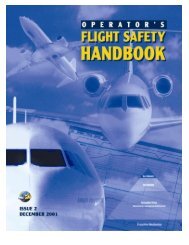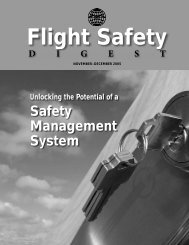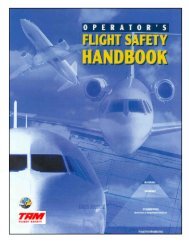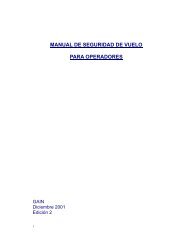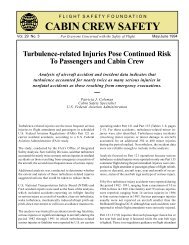Download PDF [10.9 MB] - Flight Safety Foundation
Download PDF [10.9 MB] - Flight Safety Foundation
Download PDF [10.9 MB] - Flight Safety Foundation
You also want an ePaper? Increase the reach of your titles
YUMPU automatically turns print PDFs into web optimized ePapers that Google loves.
Challenging encounters with<br />
strong gusty crosswinds during<br />
the approach and landing phase<br />
in commercial air transport<br />
— never routine for flight crews and<br />
sometimes underestimated by air traffic<br />
control (ATC) — involve some risk because<br />
of systemic gaps, mismatches and<br />
misconceptions, says Gerard van Es,<br />
senior consultant for flight operations<br />
and flight safety, National Aerospace<br />
Laboratory Netherlands (NLR).<br />
He explained the impetus for<br />
further study of the factors involved<br />
and a few of NLR’s recently developed<br />
recommendations during <strong>Flight</strong> <strong>Safety</strong><br />
FLIGHTSAFETY.ORG | AEROSAFETYWORLD | MAY 2013<br />
<strong>Foundation</strong>’s International Air <strong>Safety</strong><br />
Seminar in Santiago, Chile, in October<br />
2012. In April, van Es updated Aero-<br />
<strong>Safety</strong> World about industry responses<br />
to the complete report that he and<br />
a colleague, Emmanuel Isambert,<br />
prepared as advisers to the European<br />
Aviation <strong>Safety</strong> Agency (EASA). 1<br />
Difficult surface wind conditions 2<br />
have confronted pilots since the flights<br />
of Wilbur and Orville Wright, and<br />
one of the many recent examples was<br />
a serious incident in Germany in 2008<br />
(see “Serious Incident in 2008 Prompted<br />
German and EASA Analyses,” p.<br />
41) that motivated German accident<br />
THREATANALYSIS<br />
investigators, and subsequently EASA,<br />
to dig deeper into the causal factors<br />
and to update mitigations. A German<br />
recommendation — calling for<br />
assessment of all measuring systems<br />
that detect the presence of near-surface<br />
gusts and how pilots integrate various<br />
wind data into landing/go-around<br />
decisions — led to the NLR study for<br />
EASA, van Es said.<br />
Crosswind-related regulations<br />
originated in a period from a few years<br />
after World War II to 1978, when demonstrated<br />
crosswind in airworthinesscertification<br />
regulations became fixed<br />
for industry use, van Es said. 3<br />
Strong<br />
BY WAYNE ROSENKRANS<br />
Gusty<br />
Crosswinds<br />
Two focused studies challenge today’s variations<br />
in airline practices and flight crew decision making.<br />
© Daan Krans/AirTeamImages<br />
| 39


![Download PDF [10.9 MB] - Flight Safety Foundation](https://img.yumpu.com/18550968/41/500x640/download-pdf-109-mb-flight-safety-foundation.jpg)

![Download this Issue [PDF 7 MB] - Flight Safety Foundation](https://img.yumpu.com/18859635/1/190x245/download-this-issue-pdf-7-mb-flight-safety-foundation.jpg?quality=85)
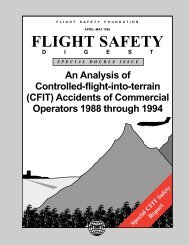
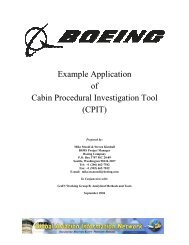
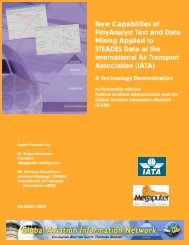
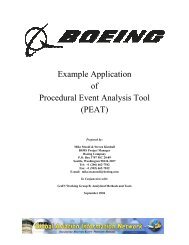
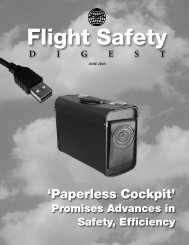
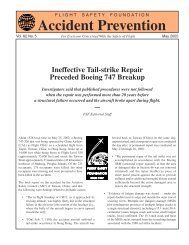
![Download [PDF 8 MB] - Flight Safety Foundation](https://img.yumpu.com/18859366/1/190x245/download-pdf-8-mb-flight-safety-foundation.jpg?quality=85)
